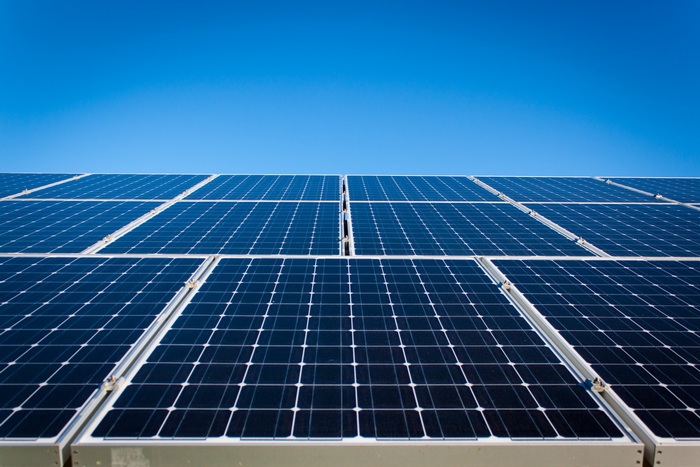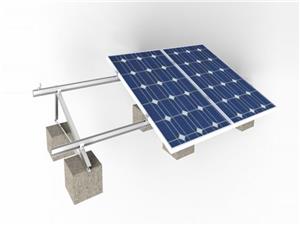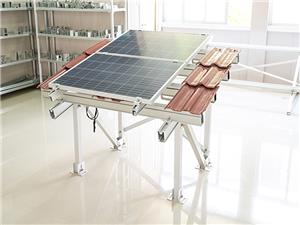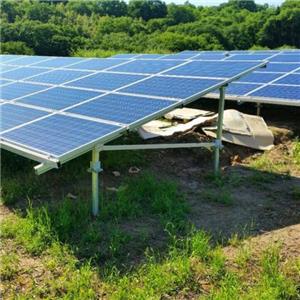Dormant for 20 years, photovoltaic stands on the location of the cusp again
Photovoltaic power plant will be on the top of investment.All countries around the world are responding to zero carbon plans,and implement policies to promote green energy.2021 will be the year of photovoltaic rapid development.

"With the joint efforts of all sectors of the industry chain, photovoltaic has achieved low price or even low price access to the Internet. We are confident that by the end of the fourteenth Five Year Plan period, the cost of photovoltaic power will be reduced to 0.1 yuan to 0.15 yuan, and finally solar energy will replace coal." Zhu Gong Shan, chairman of GCL group and co chairman of Global Solar Energy Council, told China electronic news.
It is understood that in 2020, the construction cost of photovoltaic power station is about 3.5 yuan / watt, and the cost of per kilowatt hour power is about 0.36 yuan / kilowatt hour, which is basically equal to the price of thermal power (the average price of desulfurization coal in 2019 is 0.3624 yuan / kilowatt hour). According to the data of the national energy administration, China's newly installed photovoltaic capacity has been ranked first in the world for eight consecutive years, and the annual photovoltaic grid connected capacity will exceed 40gw in 2020. Wang Bo Hua, vice president and Secretary General of China Photovoltaic Industry Association, said that during the "14th five year plan" period, the annual new photovoltaic installed capacity in China will reach 70gw, which is expected to reach 90gw.
In the context of carbon neutrality, with policy support, technical support and market demand, the photovoltaic industry has a growth space of more than ten times or even dozens of times. No wonder in an interview with China Electronics News, Niu Xinwei, executive president of Jingao technology, defined 2021 as "the first year of photovoltaic industry development". Wang Yingge, general manager of Longji Co., Ltd., believes that the photovoltaic industry will grow rapidly Ushered in the "tuyere" and "a new round of take-off point.".
Policy: the proportion of photovoltaic will be greatly increased
On September 22 and December 12 last year, China twice announced to the world: China will enhance its national independent contribution, strive to reach the peak of carbon dioxide emissions by 2030, and strive to achieve carbon neutrality by 2060. By 2030, the total installed capacity of wind power and solar power will reach more than 1.2 billion kilowatts.
In November last year, the CPC Central Committee's proposal on formulating the fourteenth five year plan for national economic and social development and the long-term goals for the year 2035 was released. A number of planning proposals related to new energy, including accelerating the growth of new energy and new materials industries, promoting the energy revolution, allocating energy resources, and reducing carbon emissions after reaching the peak. In December last year, the central economic work conference stressed that we should do a good job in carbon peak and carbon neutralization, and vigorously develop new energy.
The state attaches great importance to photovoltaic and other new energy industries to an unprecedented new height. Novel coronavirus pneumonia has brought serious impact on all walks of life under the guidance and escort of a series of policies and measures such as the standard conditions of photovoltaic manufacturing industry, etc., but the photovoltaic industry in China has shown tenacity and toughness. According to the statistics of China Photovoltaic Industry Association, in the first three quarters of 2020, the manufacturing end of photovoltaic industry maintained stable growth, with the output of polycrystalline silicon 290000 tons, a year-on-year increase of 18.9%; the output of silicon wafers 115gw, a year-on-year increase of 15.7%; the output of cell wafers 93gw, a year-on-year increase of 13.1%; and the output of modules 80gw, a year-on-year increase of 6.7%.
China's photovoltaic products have achieved the best cost performance in the world, and the capacity scale of each link is the first in the world. McKinsey's comprehensive comparative study on the innovation strength of China and the United States shows that photovoltaic industry is China's leading industry in the United States and has great (and the largest) competitive advantage.
In front of us is a huge booming market. Wang Bo Hua said that by 2025, renewable energy will account for 95% of the new power generation capacity, and photovoltaic will account for 60% of all new renewable energy capacity.
Cost: photovoltaic power is basically equal to thermal power
After 20 years of honing, China's photovoltaic industry has already got rid of the dilemma of "two ends out". The supply chain has basically realized self-control, and the new installed capacity has ranked first in the world for 8 consecutive years.
As the leader of the world's largest photovoltaic material enterprise, Zhu Gongshan believes that the revolution of any industry is to promote the revolution of the whole application through the revolution of materials, equipment and technology.
Looking back on the 13th five year plan, polycrystalline silicon has developed from 18-36 pairs of rods to more than 40 pairs of rods, the cold hydrogenation capacity has increased by 2-3 times, and the purity has increased from solar grade 1 to electronic grade 3; silicon wafers have completely realized diamond wire cutting, and the single crystal furnace feeding capacity has increased by 5 times; the average conversion efficiency of single crystal cell mass production has increased from 20.5% in 2016 to 22.8% in 2020, and the leading enterprises have exceeded 23%; Perc battery back passivation equipment has been localized, the single line production capacity has been increased from 150MW to 550MW, the equipment investment cost has been reduced from 600000 yuan / MW to 225000 yuan / MW; the power of mainstream components has been increased from 250W in 2016 to more than 450W in 2020; the intelligent and high-power level of inverter has been greatly improved.
Technological innovation has brought a steady decline in the cost of each link of the photovoltaic industry chain. The price of polysilicon has dropped by 24.9%, the price of silicon wafers, battery wafers and modules has dropped by more than 50%, and the system price has dropped by 47.2%. The cost of photovoltaic power has been equal to that of thermal power, and there is still a large space for decline.
The pace of cost reduction and efficiency increase of leading enterprises has not stopped. At present, GCL's polysilicon products produced by improved Siemens process, which is the mainstream in the market, have the advantages of technology and cost, but it is still exploring the production process of FBR granular silicon. Based on the acquisition of the FBR technical team and proprietary technical equipment of SunEdison company in 2017, after years of exploration, the FBR granular silicon production process finally made a major breakthrough at the end of last year, and the effective production capacity reached the threshold of 10000 tons. Fbr has significant cost advantages such as lower investment intensity, lower production energy consumption and less demand for project personnel. The conversion efficiency of granular silicon Czochralski crystal produced by FBR is high, which will further reduce the cost of photovoltaic power generation in the future.
In the production of batteries and modules, mainstream enterprises are also trying their best to reduce the cost of photovoltaic power generation through technological innovation. "Our goal is always to improve the power and reliability of photovoltaic products and promote the popularization and application of photovoltaic." Niu Xinwei said, "this requires us to reduce the cost of kilowatt hour power through continuous technology and process innovation. In addition to the current mass-produced Perc battery technology, JingAo has also developed and reserved more efficient n-type and other technologies. "
According to Niu Xin Wei, the conversion efficiency of deepblue 3.0 perc battery produced by JingAo in 2020 has been the first to exceed 23%, and the module efficiency has been improved by 0.4%. In practical application, it has effectively realized the decrease of single watt cost and the increase of main power. Taking Dubai 360MW project as an example, the consumption of components is reduced by 8%, the consumption of pile foundation is reduced by 17%, the consumption of cables is reduced by 19%, and the cost of surrounding system is reduced by 18%.
Niu Xin Wei also stressed that the continuous improvement of intelligent manufacturing level is also an effective means for photovoltaic manufacturing enterprises to improve efficiency and reduce energy consumption. Wang Ying Ge thinks this is true. Longji has even set up an intelligent technology company to introduce intelligence into the production of battery modules and promote the progress of Intelligent Manufacturing in the photovoltaic industry.
Wang Ying Ge said that collaborative innovation in the industrial chain is also an important way for the photovoltaic industry to achieve rapid iterative development. The thickness and cutting loss of silicon wafer are one of the important factors that affect the cost of battery and even the cost of power generation. Therefore, Longji has introduced the diamond wire with faster speed and higher efficiency to replace the traditional sand wire cutting silicon wafer. However, the hair like diamond wire was only in the hands of a few Japanese manufacturers in the early days, and it was not used in the photovoltaic industry, while the whole domestic industry chain of diamond wire was in a blank state. With the joint efforts of the upstream and downstream of the photovoltaic industry chain, the cost of Vajra line has finally decreased by more than 90%, and has been applied on a large scale. Roughly speaking, it can create more than 30 billion yuan of benefits for the industry every year.
Market: increased installed capacity
Wang Bo Hua predicted that from 2021 to 2025, the global average annual new photovoltaic installed capacity will be 222gw ~ 287gw, and the domestic average annual new photovoltaic installed capacity will be 70gw ~ 90gw. In 2020, China's new photovoltaic installed capacity is only 40gw.
According to the "China's photovoltaic development outlook in 2050" issued by the Energy Research Institute of the national development and Reform Commission, by 2050, photovoltaic will become the largest power source in China, with the total installed capacity of photovoltaic power generation reaching 5 billion kilowatts, accounting for 59% of the total installed capacity in China; the annual power generation is about 6 trillion kilowatt hours, accounting for 39% of the total social electricity consumption in that year. At present, the total installed capacity of China's photovoltaic power generation is about 200 million kilowatts, which also means that in the next 30 years, China's photovoltaic industry still has dozens of times of development space.
In the past, there were three common types of photovoltaic applications in China's market. The first type was large-scale ground power station, the second type was industrial and commercial distributed generation, and the third type was household distributed generation. The household distributed photovoltaic in 2020 gives the industry a surprise, with annual new installed capacity exceeding 10GW for the first time, accounting for 25%. After the unremitting efforts of the enterprise and the sinking propaganda, household photovoltaic has been deeply rooted in the hearts of the people, and gradually has a mature business model.
In Wang Ying Ge's view, although these three types of applications have made great progress, in order to achieve the goal of carbon neutralization, we should continue to explore photovoltaic application forms and expand photovoltaic application scenarios.
The accelerated construction of new infrastructure such as 5g network and data center has brought new opportunities for the development of photovoltaic industry. On January 12, technology giant Tencent announced the launch of carbon neutral plan. Ma Hua Teng predicted that the data center will become the key to Tencent's use of clean energy in the future.
The power consumption of the data center is really amazing. In 2017, the total power consumption of China's data center exceeded that of the Three Gorges Dam and Gezhouba power plant. In 2018, the power consumption of China's data center was more than that of the whole society in Shanghai. It is predicted that the power consumption of data center will maintain an annual growth rate of 30%. The distributed photovoltaic and data center have the natural advantages of combination, "photovoltaic + energy storage", "photovoltaic + large power grid" and other multi-energy complementary modes can provide a continuous supply of clean power all day and meet the power demand of the data center running day and night.
In the construction of 5g network, photovoltaic + energy storage can effectively solve the energy consumption problem of base station; in the construction of new energy vehicle charging pile, "integration of optical storage and charging" has become the most potential combination; the steady progress of UHV construction will thoroughly solve the problem of photovoltaic power consumption during the "14th five year plan". In addition, "PV +" integration applications such as PV + industrial multi energy complementary and PV building integration are also accelerating.
Although it is still facing a series of challenges such as supply chain, land use, power grid and consumption, the outbreak of photovoltaic industry is the general trend. As Zhu Gongshan said, "the industry is confident to reduce the cost of photovoltaic power to 0.1 yuan to 0.15 yuan by the end of the 14th five year plan, and ultimately promote solar energy to replace coal and become the first energy source in the future."




